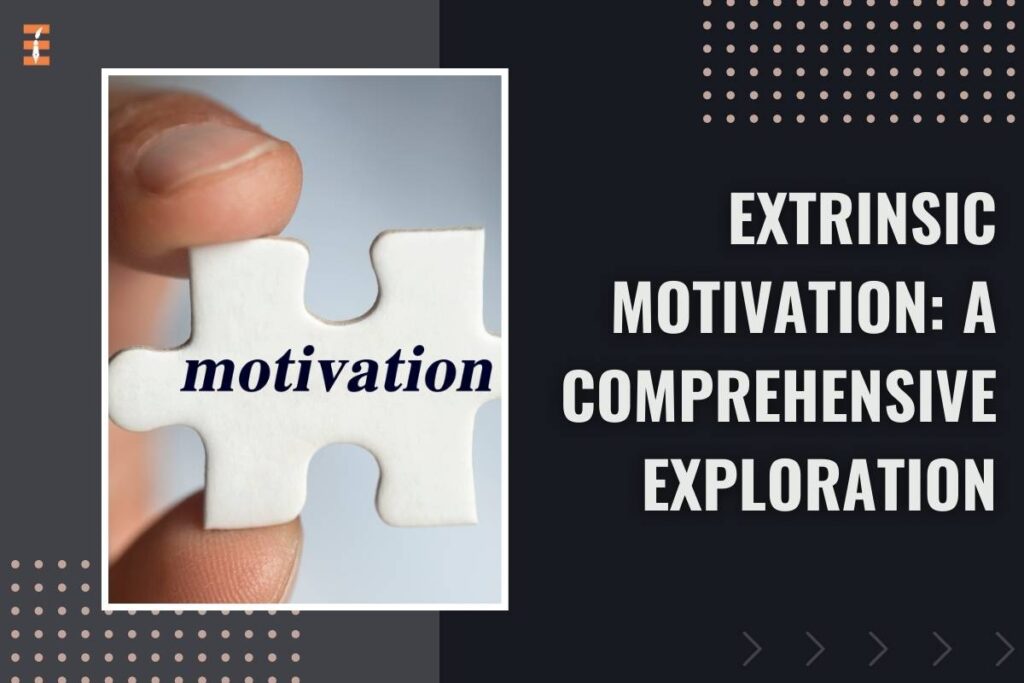Navigating the intricate landscape of human motivation unveils the profound influence of extrinsic motivation. In the pursuit of personal and professional excellence, understanding the role of external incentives and rewards becomes paramount. This exploration delves into the essence of motivation, its dynamic interplay with intrinsic drives, and strategic approaches to wield its power effectively. From intentional reward structures to the art of surprise incentives, we unravel the intricacies of extrinsic motivation, recognizing its potency in propelling individuals toward goals when intrinsic motivation falters. Join us on this insightful journey into the realm of motivational dynamics.
What is Extrinsic Motivation?

Extrinsic motivation (EM) constitutes a compelling force in steering human behavior, relying on external factors to prompt individuals toward specific actions or goals. Unlike intrinsic motivation, which arises from personal satisfaction or interest, EM is hinged on external rewards or consequences.
Exemplifying this concept are scenarios where individuals are driven by external factors such as bonuses, grades, accolades, or even punishments. The essence of EM lies in the external inducements that influence behavior.
Extrinsic Motivation Examples
Examples of EM permeate various aspects of our lives. In the professional realm, receiving a paycheck for completing work tasks exemplifies monetary compensation as an external reward. In academic settings, grades serve as tangible external motivators. Workplace promotions, bonuses, and even disciplinary actions manifest as instances where external factors shape our actions and decisions.
Understanding these examples underscores the prevalence and significance of extrinsic in both personal and professional spheres.
The Difference between Intrinsic and Extrinsic Motivation
Delineating between intrinsic and extrinsic motivation is fundamental for comprehending the intricacies of human motivation. Intrinsic motivation is rooted in internal desires and personal enjoyment, propelling individuals based on inherent satisfaction. On the other hand, it taps into external incentives or disincentives to drive behavior.
While intrinsic motivation stems from within, arising from genuine interest or the inherent value of an activity, EM hinges on external factors such as rewards, punishments, or recognition. Striking a balance between these two motivational forces is pivotal for fostering a holistic and sustainable approach to personal and professional development.
How Extrinsic Motivation Helps People
It serves as a powerful catalyst in propelling individuals toward specific objectives. External rewards, such as monetary compensation, recognition, or tangible benefits, provide immediate incentives, fostering enhanced performance and goal achievement. In situations where internal motivation may be lacking, it steps in to bridge the motivational gap.
Consider the workplace, where performance bonuses or promotions can motivate employees to surpass their targets. The allure of receiving accolades or tangible benefits becomes a driving force, contributing to increased effort and commitment.
The Downsides of Extrinsic Motivation
While EM is effective, it is not without its drawbacks. Overreliance on external rewards can lead to diminishing intrinsic motivation over time. When individuals focus solely on the external reward rather than the intrinsic value of the task, their commitment to the activity may be short-lived.
For example, if employees are motivated solely by the prospect of a bonus, their engagement may decrease once the bonus is received. This phenomenon underscores the importance of balancing extrinsic and intrinsic motivators to cultivate sustained commitment and enthusiasm.
How to Use Extrinsic Motivation Wisely:
1. Give Rewards Intentionally

The intentional alignment of reward systems with overarching goals and objectives ensures that external incentives reinforce desired behaviors. Rewards should be meaningful and contribute to long-term success.
Example: In a sales environment, tying performance bonuses to achieving specific sales targets ensures that the reward directly correlates with the organizational objectives.
2. Try Giving Surprise Rewards
Infusing surprise elements into reward systems adds an exciting dimension. Unexpected rewards can generate heightened motivation and create a positive association with tasks.
Example: Unexpected bonuses or recognition for exceptional performance can boost morale and create a sense of appreciation among employees.
3. Know What Motivates Each Person
Recognizing that individuals are motivated by different factors is crucial. Tailoring extrinsic rewards to align with each person’s unique motivators enhances their effectiveness.
Example: Some employees may be motivated by financial incentives, while others may be driven by public recognition. Understanding these individual differences allows for targeted motivation strategies.
4. Pick the Right Situation
Extrinsic motivation should be applied judiciously, considering the nature of the task and the individuals involved. Certain situations may warrant external incentives more than others.
Example: In a project with tight deadlines, offering additional paid time off as a reward for meeting milestones can be a strategic extrinsic motivator.
5. Offer Praise and Feedback

Beyond tangible rewards, verbal recognition and constructive feedback can serve as powerful extrinsic motivators. Acknowledging efforts and providing guidance contribute to a positive motivational environment.
Example: Regularly acknowledging employees’ contributions during team meetings and offering constructive feedback on their work fosters a culture of continuous improvement.
Extrinsic Motivation Works When Intrinsic Motivation Doesn’t
There are instances where intrinsic motivation may wane, and EM becomes a valuable intervention. In tasks that are repetitive or inherently less rewarding, external rewards can inject enthusiasm and commitment. However, the key lies in striking a delicate balance between intrinsic and extrinsic motivators to ensure sustained engagement and personal growth.
A nuanced understanding of EM empowers individuals and organizations to harness its potential judiciously. By integrating thoughtful reward systems, recognizing individual motivators, and being mindful of contextual nuances, extrinsic motivation becomes a transformative force. When used as a complement to intrinsic motivation, it emerges as a valuable tool in cultivating a motivated, engaged, and high-achieving environment. Balancing the interplay between these motivational forces fosters a holistic approach to personal and professional development, ensuring enduring success.
Also Read: 25 Intrinsic Motivation Examples to Embrace in 2024

